Once you have paint tinted, it cannot be returned to the store. So knowing how many coats of paint you will need is key: the trick is doing fast, full, thin coats (not struggling to make it thick so it will cover in one).
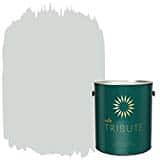 If you just want the bottom line here at the top:
If you just want the bottom line here at the top:
- Repainting a wall: one coat if same color using a quality paint: give Kilz Tribute a try.
- New walls: one coat of primer (I use this drywall primer), followed by 2 coats of paint.
- Ceiling: Use the best Benjamin Moore ceiling paint: you’ll be glad later. Over any white (like a primer), you only need one coat!
- Most other situations will need 2 coats of paint, but see below each case.
- To speed the drying time, we use the ole standby drying accelerator.
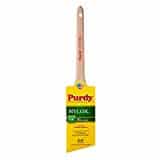 Main tools: A (good) brush (we only use Purdy—not expensive and really last) lays paint much thicker than a roller. That product page lets you choose the size you like. I like 3 inch! Using a latex-only brush is the best: you’ll be amazed at the speed and flow.
Main tools: A (good) brush (we only use Purdy—not expensive and really last) lays paint much thicker than a roller. That product page lets you choose the size you like. I like 3 inch! Using a latex-only brush is the best: you’ll be amazed at the speed and flow.
Roller: Those rollers that come in kits with the tray etc? They shed lint so your wall, leaving a rough surface. It’s a no-brainer: professional roller cover and quality roller frame are not expensive and last forever. Read how to clean rollers easily and the same for brushes.
Takeaway: the number of coats needed on the ‘cut’ (the brushing) is often one less than the rolling. Brushing lays down much more paint.
But what do you paint first: walls or trim? My way is easier and much faster.
How many coats of paint do I need for…
• New walls (or big drywall patches)? One coat of primer, then 2 more coats of finish paint. The drywall primer I linked to at the top is not expensive, and you do not need a very thick coat: just give the new drywall a drink to seal it up. If you use normal paint as a primer, the new wall will soak up your expensive paint and not only that, it will ‘flash’ (show flat/shiny spots). Primer evens out the different surfaces. If you have water stains, use a stain-blocking primer. Look through the same supplies I use on my jobs here.
We have a post all about this: How Many Coats of Primer You Need? Quick answer, almost always one, sometimes zero—but be careful!
• Doing the same color as existing color? One coat probably. Pros put 2 coats on unless the new paint is EXACTLY the same color, and even then, old paint may have faded in the sun and so on. We cannot let that show through so we usually do 2. This covers all stray scuff marks too.
- Note: two quick coats do not have to be ultra-thick when carefully applied. Just a do uniform layers of paint, a total of two times is actually faster (trying too hard to do one is slow) and needless to say, 2 coats look better (no skips).
- One coat with “paint and primer in one” is a great marketing idea (looking at you Home Depot), but can you really cover as well as 2 coats? Usually not, but ready how sometimes it’s good.
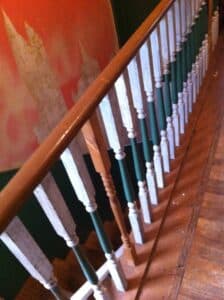
• Covering dark over light shades? Do at least 2 coats of paint. The ‘one coat paint’ you see on TV is not going to cut it here. Do a sample spot (with a roller, not a brush) to see if you need 3 coats: look closely at 2 with a bright light for coverage. (Use a fan to speed dry—more below). The Kilz paint above is fine for this too.
- Sorry to shock you…sometimes we need 3 coats. You can see the difference.
- When doing 3 coats, we start with a low-cost primer. Why? Because 3 coats of good paint are more expensive than a primer plus 2 coats! Just economics.
- You say: “What about the extra cleaning of the primer?” Read how easy it is to clean rollers and also brushes. Sometimes we don’t even clean (if it’s all white, it’s all right (thanks Chris Rock)).
• Painting light over dark? Same as dark over light above.
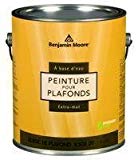 • Ceilings? Finally a true one coat paint. Ah, Benjamin Moore Ceiling Paint. It cost a bit more than your basic box-store paint, but it is truly a one coat paint for ceilings (read all about ceiling paint). If your ceiling has stains, learn how to block them before painting.
• Ceilings? Finally a true one coat paint. Ah, Benjamin Moore Ceiling Paint. It cost a bit more than your basic box-store paint, but it is truly a one coat paint for ceilings (read all about ceiling paint). If your ceiling has stains, learn how to block them before painting.
• Textured walls/ceilings? Do the same number of coats as for smooth, but you’ll need a bit more paint. One gallon covers 400 square feet of a smooth wall, in general. For stucco or ‘knock-down’ or other textured walls, for example, might cover 200-300 sq. ft.
- Remember: rollers apply thinner coats of paint than brushes. Purdy brushes spread evenly, unlike the dollar-store brushes you get in roller kits. Plastic bristles made in China do not ‘cut it’, pun intended. If you go with low-cost brushes, you’ll not cover nearly as well and wish you had spent the extra 10 bucks on a lifetime tool! And it takes a lot more time. Trust me: get a Purdy Nylox brush (linked above).
All rollers deposit thick—thin—thick paint as it rolls. The second coat covers the thin spots.
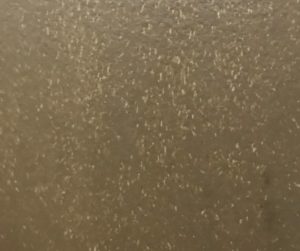
The problem: Wet paint looks great while wet, like it really covered in one coat. But as it dries, it shrinks up and exposes the old color underneath. We don’t even check for coverage during the first coat: it will not be enough! We just look for gaps—where the roller skipped etc. These will show later and you have to touch them up.
At the bottom, you will find some related posts about how many coats of paint on floors, ceilings, plus links to choosing the right primer, and when you’ll need it.
Tools for quality, speedy work:
In addition to the brush, roller and roller cover I linked to above, here are some helpful if not necessary things.
Budget tools (to say it nicely) are slow to use and don’t let you cover properly. (Also, low-cost rollers and brushes shed lint and shed bristles into your work. There is no fixing bad tools. Use the same ones I use: they all ship for free. You’ll be turning pro.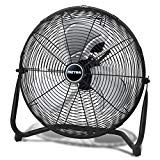
- All painters carry something like this powerful fan.
Temperature matters: we keep the heat on and crack a window to reduce moisture. This is the fastest way to get a coat of paint to dry quickly in the winter. In the summer we laugh.
Quality paints actually cost less…if you count time as money and we do. ‘Low-cost’ paint costs more because it takes longer and turns your hair grayer than the paint.
So you see how we get proper coverage without struggling cover in one coat. We are in the money-making business, and our results have to look 100% right. If skipping a coat was an option, we’d do it, but it’s not. The best was is quick thin coats: time-tested sucess. The number of paint coats is not the issue: the issue is quality!
Please remember, the tools you buy are key to minimize how many of coats of paint you need:
- Buy quality tools. We have listed the essential tools on this page.
Kilz has a decent collection of colors in all sheens (sheen chart at bottom of this page). (Kilz also has a nice website: they have been around for a long time.)
Related Posts:
How Long to Wait Between Coats of Paint?
Best Floor Paint: Only 1 Coat!
Room Painting Tips by a Professional: Faster, Better, Cheaper
Best Ceiling Paint and One Awesome Timesaving Tip
How Many Coats of Primer for Any Situation? You’ll Like the Answer.
I was asked to write about the number of coats of paint a quality paint job takes. Comment below if you want more info or to give an opinion.
This is for homeowners looking for a quality paint job, not to landladies/landlords who want a quick, low-cost ‘facelift’ job (what we painters called ‘curbside appeal’). You’ll probably do just one coat, but you should re-think that!
So, the answer to how many coats of paint do I need is almost always two, (after priming if necessary) is done.
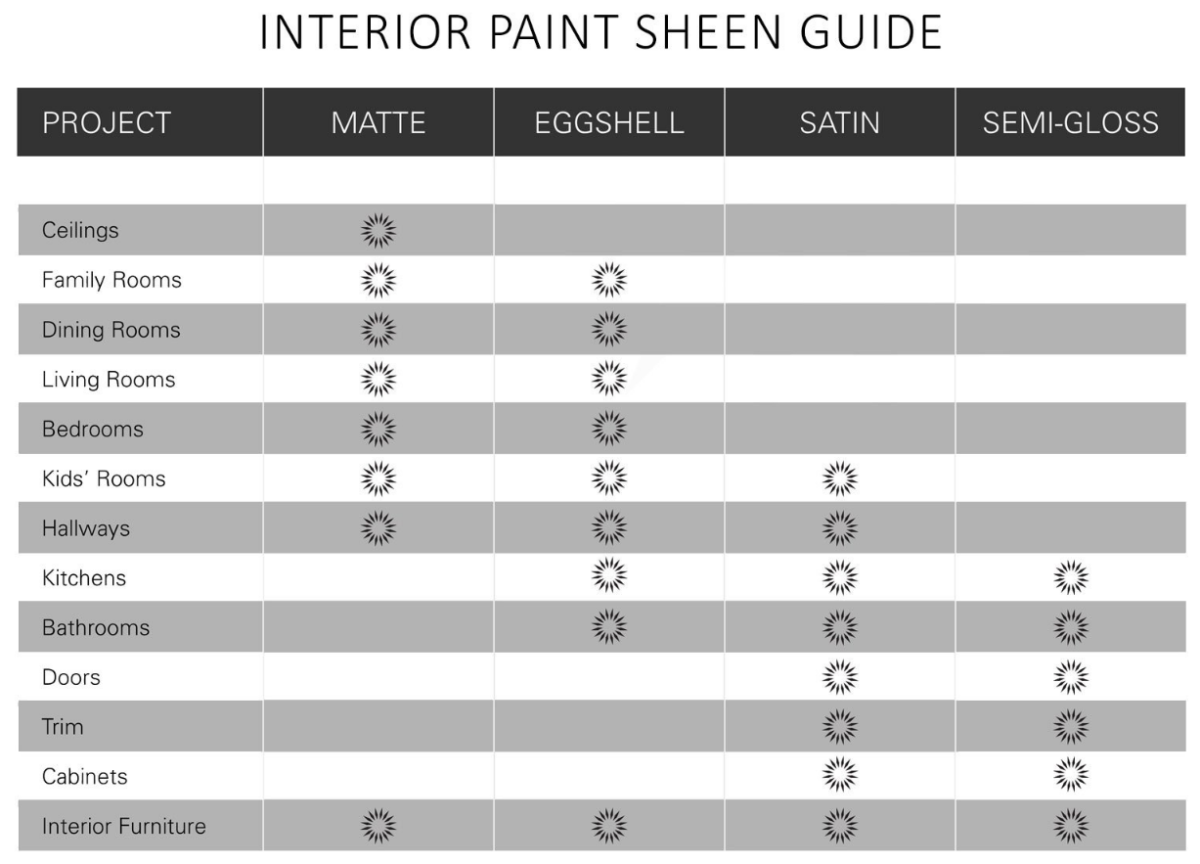
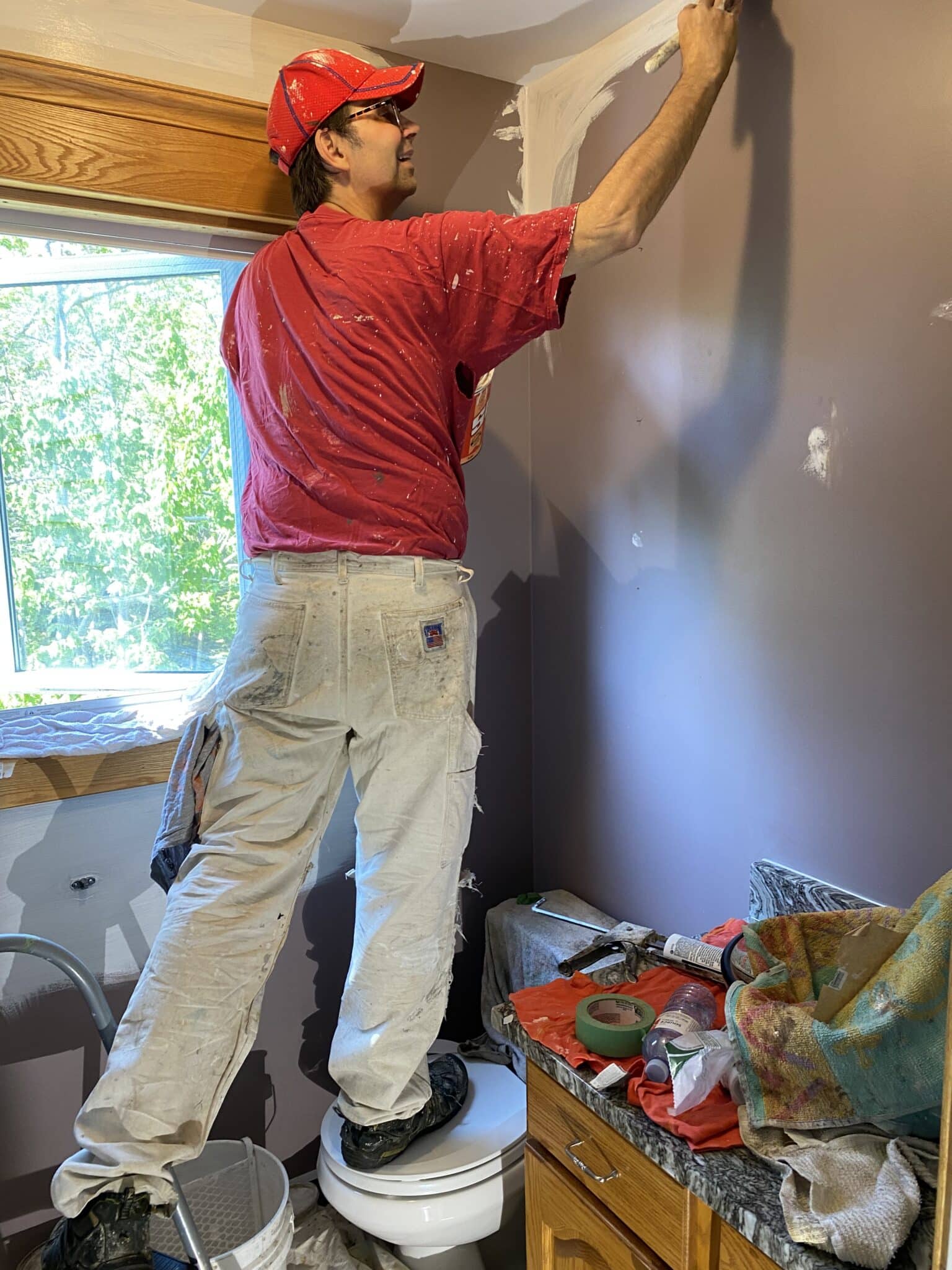
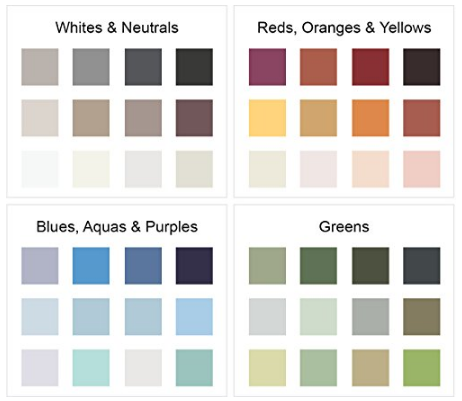
Hi Brad,
We had beige painted walls and did one coat of white primer and one coat of paint (Benjamin Moore Atrium White). Is this enough? Or do we need to do one more coat of atrium white? My husband thinks it’s enough but what would you recommend in this case? We also did one coat of primer on the trim and doors, and then one coat of Sonoma Clay (BM). Same question here. Is one coat of Sonoma clay enough with the primer?
One coat after primer if light can be enough. Take your flashlight and look very closely. See any tan? no? you are done!
How do we get insurance to approve 2 coats of paint as they are only allowing for one after water damage, and we only get 2 coats for the fresh drywall, no primer, and I don’t think this will sufficiently make the walls look done.
Any suggestions?
They don’t know what they are talking about. You have to educate them. Send me the info and put them in touch with me and I’ll try to convince them. One coat? Must be a new college grad who never painted
Hi Brad, I am having several rooms painted Benjamin Moore’s cotton balls, a soft off white colour. The current walls are a light tan. My painter says it’s taking more than 2 coats to cover and I should choose a darker shade (he doesn’t want to have to do 3 or 4 coats everywhere). I don’t really want to go much darker. Are there any other options? It seems odd that this off-white colour is so hard to cover with another off-white colour. Thanks.
Bullocks to him.
That will cover with a standard primer, I’d use drywall primer, then 2 coats of white.
Don’t listen to painters on color. I never gave advice as when it turns out the client hates it then it’s my fault!
Do a test. Take a primer, then 2 coats with a roller if you can or a brush and do what I said. Brushes lay on much more paint so if you have a roller to test, it’s best.
Also try just 2 white, no primer. YOu might see the old tan, but maybe not. Ben Moore covers well. Ask a paint store also.
Thanks so much, Brad! I really appreciate it!
Hi Brad!
We are painting our 25 yr old knotty pine ceiling. It was clear coated when first put up.
So far, hubby has spot primed the knots with Zinsser Bin Ultimate Shellac primer.
He then brushed on two coats over full length of boards.
We’ve been advised to now do a coat with a high adhesion primer…is that necessary or can we now do two coats of paint?
Thanks so much!
I am not sure since I cannot see it but it seems to be too late for bonding primer. That would have been the thing between the varnish and the top coat. You might be fine. The Bin is excellent and if you used the shellac based (alcohol to thin, right?) you did well. Don’t add anymore primer. Do ceiling paint now. Test in spots esp over the knots. You should be ok. Good luck!
Excellent painting advice. I’m so glad I found Bradthepainter before starting to paint my new living room walls (now red) to bright white……
Good luck! Use a good primer!
Hi Brad! We just painted our living and dining room with 1 coat of Swiss Coffee from Benjamin Moore and it’s looking more yellow now that it’s on the whole room versus the 2’x2′ test swatch we originally painted. We ran out of paint for our second coat and now want to switch to Atrium White for a more neutral tone. Since we’re going from off white to off white (just very slightly different shades) do you still recommend doing 2 coats with the Atrium White or could we make do with 1 coat of the Atrium White over the 1 coat of Swiss Coffee we already painted? Thanks for your expertise and advice!
A pro would do 2. Having said that, if they are very close it may be ok to do 1.
How to know? First do your whole coat, then add a 2nd coat in a test spot…some corner or something.
It will look better with 2 of course, but how much better? I know paint is expensive these days, but if you see any of the old color tinting your wall, bite on a bullet and buy another gallon or 2.
Another tip… always do test color swatches on several walls and look in all kinds of light, esp at night.
These two colors are the same paint:
https://www.bradthepainter.com/wp-content/uploads/2017/07/paint-in-daylight-and-nightlight.jpg
Brad,
My popcorn ceiling was falling off. I thought I could repair with spray popcorn. Bad decision. I have now removed all the popcorn and will need to skim coat over damaged areas and where some tape is exposed at wall edge. The existing drywall was never primed. Just popcorn sprayed on.
Question, do I need to skim entire ceiling or can I skim areas needing repair then prime and paint with your recommended BM paint. Skimming the entire ceiling would be a big job, and I want to do just what is needed to finish this work.
Thanks
Hello 🙂
We painted our deck and wanted a dark brown ended up with 2 coats of what looks like a charcoal gray Sherman Williams semi gloss on our cedar deck railing. Great paint just wrong shade.
Finally found a true brown –
Hmmm – how many coats will we need to cover the prior 2 coats of dark grey to get the brown.
Thank you
Stephens Family
Probably 2, but don’t put them on thick. Do 2 normal coats and if you have some brown streaking, another quickie should do it.
Good luck.
b
Brad, looking for a little advice on my new garage project. 24 years in commercial construction and I have forgotten more than I remember. Have primed all drywall and first coated walls and ceilings with SW semi-gloss acrylic latex paint. The space is now getting to cold with out adequate heat to apply the second finish coat. Can this project ( walls and ceiling ) withstand the cold climate conditions until spring when warmer temps would be better suited for finishes. When I say cold, I’m talking N.H. area. Look forward to your advice thanks,
Mike
Hi. I’ll take your messages in order. I’m not sure why you used semigloss on the ceiling. We usually do flat, but at least you can clean it if you like. Not flat. On the can you have, check the temp range they say is acceptable. But in any case, never let wet or dry paint freeze if it’s interior paint. Interior dries harder than exterior and will crack.
I had a quick look at most latex interior temp ratings and I see that 40 F is the minimum, typically. Keep in mind, colder means drying time is much longer. Use a fan and space heater until it’s past ‘tacky’. Good luck.
Hi Brad.
Thank you for the great information! I have 2 questions.
We have painted the knock down textured ceiling with one coat of Benjamin Moore ceiling paint and now discovered that the original ceiling might have never been painted before. Reading the information you provided above, we should have used a primer first, but now it’s too late.
1. What are the consequences of not having a primer under the ceiling paint?
2. How do you determine if the ceiling needs a second coat when it’s textured and looks different depending on the lighting?
Thanks!
Jess
Both good questions. First, no worry that there is no paint or primer between the knock-down and the old ceiling if that’s the case.

The only reason you might have trouble without a primer is if the old ceiling has stains that could bleed thru. This can take years, so just keep an eye out and if you see a stain, buy a good primer-SEALER and then more paint. But it sounds like the old surface was ok.
Different lighting makes any surface a different color. If it looks splotchy, is splotchy a word?, then you do have to do another coat and if that’s the case, go ahead with a primer and one paint coat. Some people like paint and primer in one. These days some products are ok, but the old Behr really sucked.
If you send some pics to my email showing the difference all in one shot, I can comment more.
Good luck! ps you’re lucky! ever read some of the horror stories people write in? wow
PS: Her photo is now here. It seems it’s not got any splotches so I’d say my advice above stands.
Hi Brad. Thanks for the quick reply. Our old ceiling was/is in a descent shape and we have already applied one coat of BM ceiling paint on it (prior to finding your site and messaging you). Now that it’s dry and we have closely inspected it, it does look splotchy. Yes, it is a word! The ceiling is in our open concept living/dining/kitchen area with lots of natural light and south facing windows.
Just to clarify, should we do a coat of primer and then another coat of paint on top of already one coat of paint or would just a second coat of paint would work?
Thanks!
Oh, I did not see your update here. So yes, go with a high quality primer with stain blocking power then one coat of ceuiling paint…but since you (and generally we also always) do just one coat after a white primer (assuming the paint is also white), you have to use a very good light and not miss a single bit. Roll in two directions and get it very wet. Or do 2 coats which may be faster, but use more paint.
What primer? I like this.
It’s a sure thing for MOST stains. But it is oil, which is a hassle. If not that, then go with KILZ Premium High-Hide Stain Blocking Int…
Hello Brad, we are getting ready to paint a nursery and bought Benjamin Moore Nursery Pink. It needs to go over a periwinkle blue. My husband seems to think two coats of Kilz and then one of the pink will work but I keep reading two coats of the color is best. Any advice? Is two coats going to make a big difference in the color (make it too pink)?
Just one coat of a good primer. It does not have to have much stain killing power, but it could. Drywall primer would probably do it. You’ll know when you do a test area or 2.
Prime a square, dry, put 2 coats with your roller or your method of application and you’ll know for sure.
Pink, that is, red, is notorious for poor coverage. The blue is not your problem!
If you have the ability to tint your primer a light gray, that’s helpful in coverage. Just is, I don’t know the chemistry of why.
But a white primer will probably be fine. Do the testing!!
Hey, Brad –
Looking at viscosity on a brand’s TDS. Why do some show a huge range. For example, both Behr Ultra and Marquee show 50-140. Why such a difference?
Thanks!
I contacted Behr, but together we could not find the one you mean. Can you reply here or eamil me?
Thanks
Have you ever hear of Hallman Lindsay paints?
No. I looked it up and see it’s ‘made in Wisconson for Wisconson’. Not very compelling.
In another comment, you mentioned Sherwin Williams also. I’m a fan, but Ben Moore is simply better in my experience.
I am using Benjamin Moore Gray Owl. The painters have done 1 coat primer and 1 coat paint. My husband wants more contrast between it and the cloud gray white on the ceiling. We are going to do the 2nd coat. My question is will a 3rd coat of the paint make it richer?
Hi. I think you might mean Cloud White on the ceiling? Don’t know of a cloud gray…Anyway, yes the color will probably be fuller, and you should know that the sheen will build. For example, eggshell gets a bit glossier with each coat. Back to color: the primer was white I assume so one coat gray over that will show specs of primer under it. Look with a light and let me know if I’m right. The roller stipple does not cover perfectly evenly. This is why we always do 2 coats unless the primer and paint are the same…usually that means white and white…like a ceiling.
Should I say more? Let me know!
b